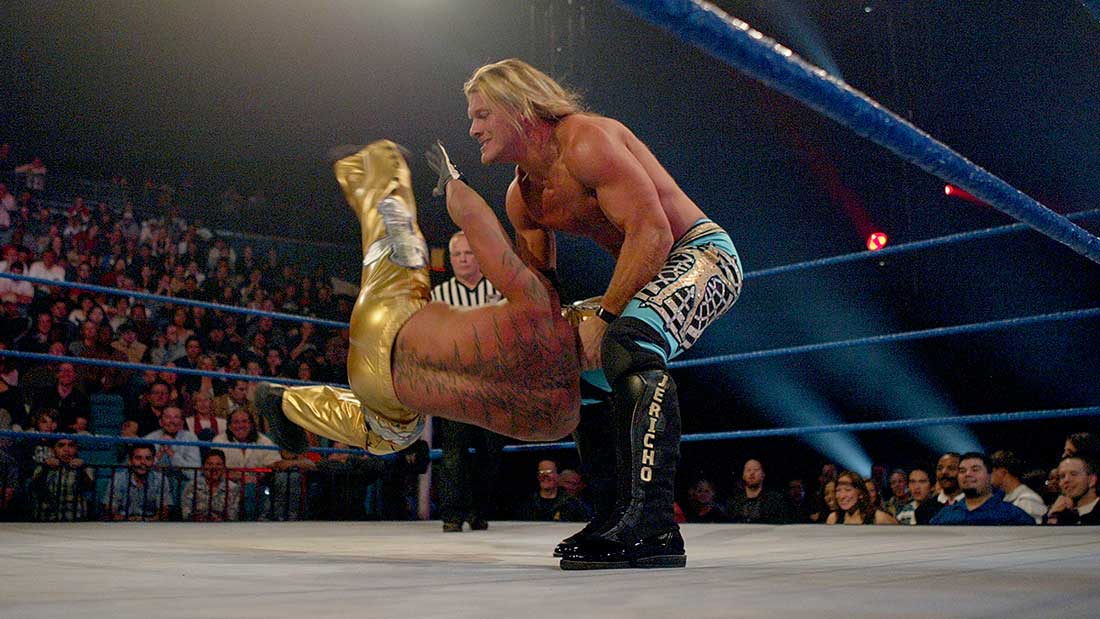Vanadium vs lithium: China weighs its energy storage options

Just like Chris Jericho is about to lay a smackdown on Rey Mysterio, will vanadium take out lithium as the top contender for grid-scale energy storage? Pic: Getty
There are signs China is leaning toward vanadium for grid-scale energy storage as the world’s most populous nation weighs up its options to keep the lights on in the years ahead.
The number of new energy storage projects globally more than doubled in the first half of 2018 compared to a year earlier, which is spurring demand for battery metals like vanadium and lithium.
The UK had the highest amount of new capacity at 307MW, or 44 per cent of the total — an increase of 441 per cent from the first half of 2017.
But China also witnessed big growth, with new energy storage projects climbing 127 per cent in the first half – led by grid-side energy storage.
Grid-side energy storage held the largest portion of China’s additional capacity, at 43MW, nearly 45 per cent of the total.
In terms of technologies, lithium-ion still has the upper hand.
The totalled installed capacity of lithium-ion batteries accounted for 94 per cent of the UK’s total at 690MW, which is a 142 per cent spike over the previous year.
Meanwhile, the 94MW capacity installed by China in the first half of this year accounted for 94 per cent of the total and marked an increase of 172 per cent.
This will no doubt be welcomed by players like Altura Mining (ASX:AJM), which has just sent its first shipload of Pilbara lithium to China.
- Subscribe to our daily newsletter
- Bookmark this link for small cap news
- Join our small cap Facebook group
- Follow us on Facebook or Twitter
While lithium-ion is now the favoured technology in China, the Asian powerhouse is looking at several types of batteries as it works out the best option for grid-scale energy storage – also known as “stationary storage”.
Stationary storage typically refers to battery storage solutions that use technology such as lead-acid, nickel cadmium or lithium-ion.
The systems can store excess power — including from renewable sources — for use during expensive peak demand periods.
Lead-acid has traditionally been the most common technology — but more efficient technologies such as vanadium redox flow and lithium-ion batteries are continuing to become more popular.
David Gillam, the boss of Mastermines – a specialist company that has strong ties to China and helps Australian miners with marketing and securing off-take deals, says Chinese players are looking in every direction.
“We sort of have an idea that they may be moving more towards vanadium for big installations but there’s not enough proof yet that that’s the case,” he told Stockhead.
“It’s very early days and it’s typical of China, they’re going to test everything.
“They’ve pretty well run out of spaces for hydro, so they have to look at the whole works.
“They’ve got a lot of solar and wind that’s not being used by the grid, so storage is an obvious one that they have to hit.”
Mr Gillam could not reveal which other battery technologies China is considering, just that there are “four or five different types of batteries that they’re testing”.
So what’s the alternative?
Other battery technologies that are being advanced include the zinc air battery – a tech that was developed by researchers from the University of Sydney.
Although a zinc air battery is cheaper than a lithium-ion battery it is not as efficient and is probably better suited to domestic energy storage than large-scale energy storage.
US scientists, meanwhile, have discovered a way to stop sodium batteries from exploding and make them hold a charge more effectively.
Sodium is a very cheap and abundant alternative to lithium.
Sodium-ion batteries would be physically heavier than lithium-ion, which makes them an unlikely replacement in electric car batteries anytime soon.
But researchers have been investigating the alternative because they could store energy for large solar and wind power facilities at a lower cost.
China’s interest in Aussie players grows
The problem China is facing is that a large number of its mines have been shut down due to illegal mining and environmental violations.
Mr Gillam says the Chinese government is targeting specific areas and “shutting people down lock, stock and barrel”.
“What they’re shutting down is quite remarkable,” he said.
“Anyone that thinks the Chinese government is not serious about environmental reforms is wrong.
“The number of companies being affected is enormous.”
According to Mr Gillam, this has led to an increased interest in Aussie miners.
“Even in discussions we can see that there’s a sudden interest in not just using Australian minerals, but there’s a sudden interest in the high end in processing Australian minerals in Australia,” he said.
“And it’s something that we expect to grow quite considerably in the future. We think there’s going to be huge opportunities to process minerals in Australia in the future for the right companies and they’ve got to be proactive.”
There are not many ASX-listed miners that have ventured into, or are considering venturing into, downstream processing.
But Lithium Australia (ASX:LIT) plans to be the first integrated Australian battery stock to do everything from mining lithium through to making and recycling batteries.
Chinese battery makers are already testing the company’s lithium iron phosphate cathode powders.
The company’s SiLeach process converts mine waste to lithium chemicals, before its VSPC solution turns lithium chemicals into high quality lithium-ion battery cathode materials.
Its recycling tech will recover valuable metals, including lithium and cobalt, from spent batteries.
“I think something that has been missed totally by the market at the moment is that we now have the opportunity to be far more than just minerals,” Mr Gillam noted.
“You can sort of see a few hints at that, but I think it’s going to happen on a much bigger scale.”
Match-making
Earlier this year Mastermines got Australian Vanadium (ASX:AVL) an audience with private Chinese steel and alloy producer Win-Win Development Group.
After signing a memorandum of understanding, the pair kicked off talks that could pave the way for a potential financing and sales deal for Australian Vanadium’s Gabanintha project.
“You can see that in vanadium [China has] shut down a huge amount of their resources and it doesn’t look like it’s coming back,” Mr Gillam explained.
“A lot of them are smaller companies that don’t have the capital to cope with environmental laws.”
Steel and alloys are still the key driver of vanadium demand, with around 90 per cent of global vanadium being used to make high-strength steel.
And Chinese players need more vanadium after the government introduced stricter standards for rebar – a reinforcing steel used in concrete.
“Vanadium is just off the charts at the moment,” Mr Gillam said.
“We saw the vanadium spot price spike around 23 per cent in a week. It’s unheard of for minerals.
“The spot price will obviously go up and come down at some stage, but I think the base price of vanadium is going to stay high for some years to come because I just don’t see where [supply is] going to come from.”
Other players that are advancing Australian vanadium projects are TNG (ASX:TNG), Technology Metals Australia (ASX:TMT), Intermin Resources (ASX:IRC) and King River Copper (ASX:KRC).
UNLOCK INSIGHTS
Discover the untold stories of emerging ASX stocks.
Daily news and expert analysis, it's free to subscribe.
By proceeding, you confirm you understand that we handle personal information in accordance with our Privacy Policy.








